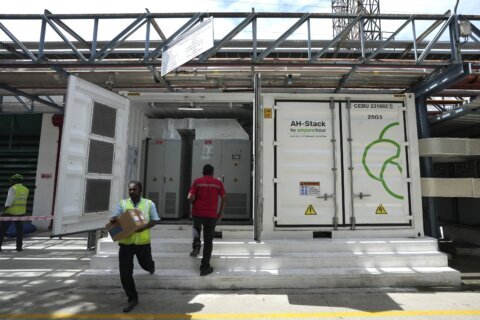Mortgage rates jumped higher across the board this week, with both fixed and adjustable interest rates trending upward. The 30-year fixed rate was 7.26%, the highest it’s been since peaking at 7.33% in November 2022.
Here are the current mortgage rates, without discount points unless otherwise noted, as of July 6:
— 30-year fixed: 7.26% (up from 7.15% a week ago).
— 20-year fixed: 7.32% (up from 7.24% a week ago).
— 15-year fixed: 6.61% (up from 6.58% a week ago).
— 10-year fixed: 6.79% (up from 6.74% a week ago).
— 5/1 ARM: 6.12% (up from 6.1% a week ago).
— 7/1 ARM: 6.25% (up from 6.23% a week ago).
— 10/1 ARM: 6.5% (up from 6.43% a week ago).
— 30-year jumbo loans: 7.31% (up from 7.22% a week ago).
— 30-year FHA loans: 6.51% with 0.05 point (up from 6.27% a week ago).
— VA purchase loans: 6.69% with 0.05 point (up from 6.53% a week ago).
“Mortgage rates continued their upward trajectory again this week, rising to the highest rate this year so far. This upward trend is being driven by a resilient economy, persistent inflation and a more hawkish tone from the Federal Reserve. These high rates combined with low inventory continue to price many potential homebuyers out of the market.”
— Sam Khater, Freddie Mac’s chief economist, in a July 6 statement
One of those stubborn economic indicators is the personal consumption expenditures price index, or PCE, which is the Federal Open Market Committee’s preferred inflation gauge. You can think of it as a companion to the consumer price index, or CPI. However, the Fed moved toward using PCE to measure inflation in 2000 because it “includes more comprehensive coverage of goods and services,” per the St. Louis Fed.
The PCE index shows that prices for goods and services rose at an annual rate of 3.8% in May, down significantly from 5.4% in January. But core PCE, which excludes food and energy prices, has stayed firm in the 4.6%-to-4.7% range during the first five months of the year. “With positive economic data continuing to confound 12 months of bearish expectations, investors are coming to terms with the fact that the U.S. economy remains resilient,” says George Ratiu, chief economist of Keeping Current Matters. “At the same time, markets are digesting the Federal Reserve’s most recent FOMC meeting minutes, which highlight that the central bank is likely to resort to another two rate hikes this year.”
Translation: More rate hikes mean that mortgage rates are likely to stay elevated for longer than previously thought. While many forecasters still believe that the typical 30-year fixed rate will decline to around 6% by year-end, that’s far less optimistic than earlier predictions of a drop to 5.2%.
[Compare: Compare Mortgage Rates]
Indicator of the Week: Discount Points to the Rescue
Homebuyers have the opportunity to purchase discount points as an upfront fee to lower their mortgage interest rate — each point that reduces the rate by around 0.25 percentage point costs 1% of the loan amount.
Take this example: On a $300,000 mortgage, you could potentially lower your rate from 6.5% to 6% by purchasing two discount points, adding $6,000 to your closing costs. Doing so could reduce your monthly principal and interest payments by nearly $100.
When mortgage rates were at historically low levels in 2020 and 2021, borrowers didn’t really have much of a reason to buy discount points. But when interest rates surged throughout 2022, more homebuyers opted for discount points, according to research from Zillow Home Loans. About 45% of conventional home loan borrowers purchased discount points in 2022, up from 27% in 2021 and 28% in 2020.
[Read: Best Mortgage Lenders.]
“Buying points can be a great option to improve monthly affordability — there are many different mortgage products, including buying points and the 2/1 buydown buyers can explore,” says Erika Kerry, loan officer at Zillow Home Loans, in the report.
If you’re thinking about using discount points to buy down your mortgage rate, you’ll need to find your breakeven point, which is how long it would take living in the home for the monthly savings to offset the cost of discount points. In the example above, it would take a little over five years to reach the breakeven point.
It might not make sense to buy discount points if you plan on moving or refinancing within that five-year period. On the other hand, if you’ve found your forever home (or at least a home you plan on living in for 10 or 15 years), then it could be worthwhile to buy down the rate.
At the same time, when you purchase discount points, you’re essentially banking on the fact that mortgage rates will be higher than what you’re currently paying until you sell your home. From a historical standpoint, mortgage rates are likely to bounce higher and lower during the span of 10 years, and there’s a pretty good chance you could just refinance down the line rather than buying discount points upfront.
[Calculate: Use Our Free Mortgage Calculator to Estimate Your Monthly Payments.]
More from U.S. News
Mortgage Rates (and Home Prices) Rebound Higher
Spring Mortgage Forecast: Rates Will Stay Above 6%
Two-Thirds of Homebuyers Are Holding Out for Lower Rates
Mortgage Rates Surge to Highest Level This Year originally appeared on usnews.com







